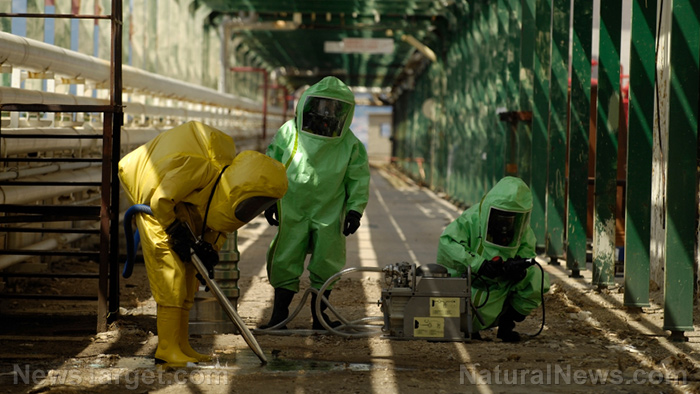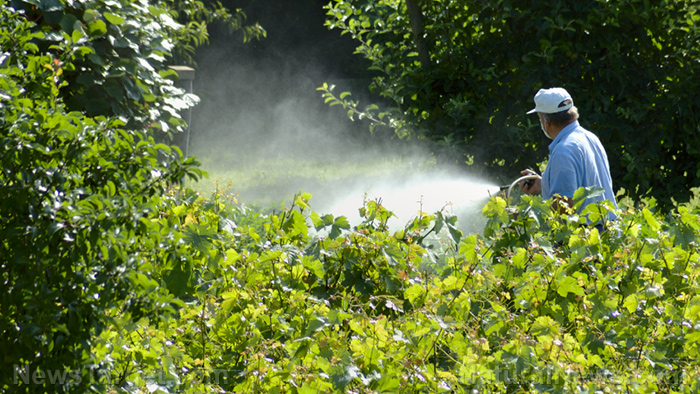Radioactive nuclear waste storage tank in Washington leaks gallons of contaminated liquid
05/06/2021 / By Nolan Barton

The Department of Energy (DOE) announced Thursday, April 29, that an underground nuclear waste storage tank in Washington state had been leaking gallons of contaminated liquid into the ground.
This was the second tank discovered to be leaking waste left from the production of plutonium for nuclear weapons at the Hanford Nuclear Reservation. The first was discovered in 2013.
The Washington State Department of Ecology’s Nuclear Waste Program, along with the Environmental Protection Agency, is currently leading the site’s cleanup.
“It’s a serious matter whenever a Hanford tank leaks its radioactive and dangerous chemical waste,” Ecology Director Laura Watson said. “Based on the information we have right now, the leak poses no immediate increased risk to workers or the public, but it adds to the ongoing environmental threat at Hanford.”
The 75-year-old tank B-109 at Hanford Nuclear Reservation is estimated to be leaking 3.5 gallons of waste a day into the ground – the equivalent to nearly 1,300 gallons per year. Many more of the 149 single-walled storage tanks at the site are suspected of leaking.
“This highlights the critical need for resources to address Hanford’s aging tanks, which will continue to fail and leak over time,” said Watson.
The tank holds 123,000 gallons of waste and is leaking into an area where an estimated 200,000 gallons have already leaked from unidentified tanks at the site.
Tank B-109 leak first suspected more than two years ago
The leak from Tank B-109 was first suspected in March 2019, when there appeared to be a small drop in the level of the liquid waste inside. Monthly checks showed the level stable until July 2020, when another drop was detected and the DOE launched an investigation.

Randy Bradbury, spokesman for Ecology, said his agency recognized that the tank’s liquid level was decreasing more than a year ago but they weren’t sure of the cause. On Thursday, the DOE finally notified the Washington agency that the tank was indeed leaking.
According to Bradbury, controlling the leak will take years.
“They’re all very well into the ground,” Bradbury said. “This isn’t something that’s going to happen next week or next month.”
Bradbury stresses that Ecology’s main concern is preventing the waste from reaching the Columbia River, which is only 10 miles away from B-109. “It will just basically sit around in the soil but in fact, it does migrate and some of it has migrated,” he said. (Related: Blunder at Fukushima: Mistake may have contaminated groundwater with radioactive waste.)
After the leak was discovered by a contractor, the DOE sent a message to Hanford site employees. The department said the tank had been “previously emptied of pumpable liquids, leaving a very small amount of liquid waste in the tank.”
The department added that systems in the area captured and removed contaminants that reach the groundwater and ensured the protection of the Columbia River. An assessment showed the tank was releasing a “small, slowly decreasing level of liquid” that poses “no increased health or safety risk to Hanford workers or the public.”
Hanford site dates back to World War II
The Hanford Nuclear Reservation, which was constructed during World War II to make plutonium for nuclear weapons, includes tanks that contain various mixed waste materials made of both radioactive components and some of the “most dangerous waste created over four decades,” according to the state’s Department of Ecology.
Located near Richland in the southeastern part of the state, the site produced about two-thirds of the plutonium for the nation’s nuclear arsenal, including the bomb dropped in 1945 on Nagasaki, Japan. It is now the most contaminated radioactive waste site in the nation. In the past, more than 67 tanks at the reservation have been suspected to be leaking or have actually leaked.
Tank B-109 began receiving waste in 1946 and was taken out of service in 1976. The giant tank was constructed as part of the Manhattan Project that built the first atomic bomb and received waste from Hanford operations.
It was still full of waste at the time it was taken out of service, but no further waste was added.
Hanford needs new tanks
Local organizations have called on legislators to address the site’s repeated tank leaks.
“This new leak of B-109 puts a spotlight on the need for Congress and the Department of Energy to act immediately to increase funding for cleanup and design and build new tanks, as soon as possible,” the Hanford Challenge, a nonprofit advocacy organization, said in a statement Thursday. “Hanford needs new tanks now.”
The Seattle-based watchdog group Heart of America Northwest said the leak releases radioactive waste that is dangerous for hundreds to thousands of years.
“There’s no such thing as a small leak from a high-level nuclear waste tank,” Heart of America Northwest Director Gerry Pollet said.
Meanwhile, an environmental impact statement from the National Environmental Policy Act said that “numerous geologic problems with the Hanford Reservation have been pointed out.”
“Leaving the waste in the ground is just not acceptable,” the statement read. “There is not enough information to take a chance on leaving any radioactive waste in the ground.”
Follow RadiationScience.com for more news and information related to radioactive nuclear waste.
Sources include:
Tagged Under:





















